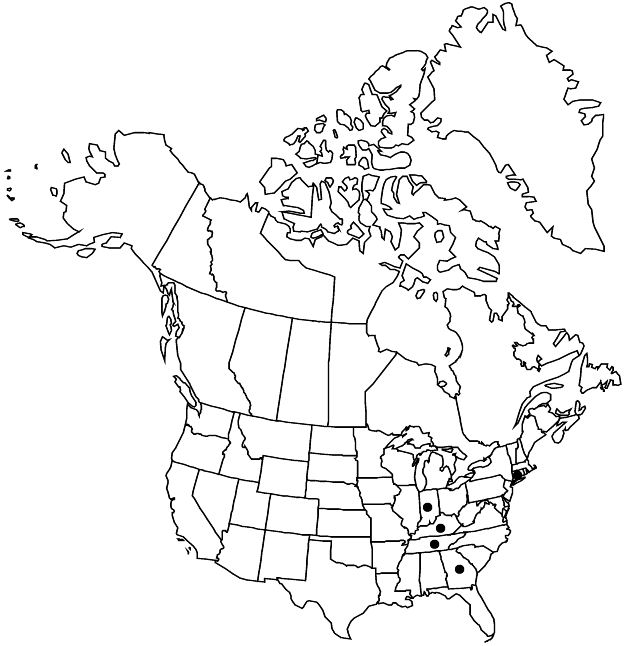Hypericum dolabriforme
Descr. Pl. Nouv., plate 45. 1801.
Subshrubs, decumbent and woody (not rooting) at base, branching at base or throughout, 1.5–5 dm, bark thin. Stems: internodes 4-lined at first, then 2-lined to terete. Leaf-blades linear-elliptic or linear-oblong to linear, 20–35 × 3–5 mm (main-stem), base not articulated, narrowly cuneate to rounded, margins recurved to revolute, apex obtuse to acute, midrib unbranched. Inflorescences obconic, (1–) 3–20-flowered, ± widely branched, sometimes with single flowers at immediately proximal nodes. Flowers 15–20 mm diam.; sepals persistent, not enclosing capsule, 5, ovatelanceolate to lanceolate, ± foliaceous, unequal, 5–8 (–15) × 2–3 (–8) mm; petals 5, yellow, curved-dolabriform, 10–13 mm; stamens deciduous, 120–200; ovary 3-merous. Capsules ovoid-conic, rostrate, 4–9 × 3–4 mm. Seeds carinate, 1.5–1.8 mm; testa reticulate-scalariform. 2n = 18.
Phenology: Flowering summer (Jun–Sep).
Habitat: Limestone outcrops, cedar glades, dry, rocky stream beds
Elevation: 0–500 m
Distribution

Conn., Ga., Ind., Ky., Tenn.
Discussion
Hypericum dolabriforme is superficially similar to H. sphaerocarpum, to which W. P. Adams (1962) related it. Apart from the narrow leaves and unequal sepals, it is much nearer morphologically to H. myrtifolium (for example, in the wide-spreading inflorescence, numbers of stamens, and ovoid-conic capsules). Hypericum bissellii, described from a plant growing in Southington, Connecticut, is unlikely to be indigenous in that state.
Selected References
None.
Lower Taxa
"dm" is not declared as a valid unit of measurement for this property.